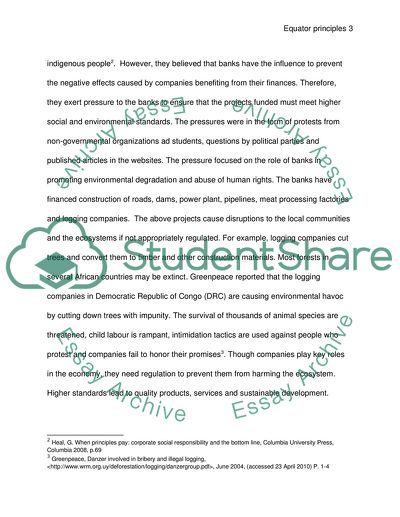Cite this document
(The Equator Principles and Their Effects on Project Lending Research Paper, n.d.)
The Equator Principles and Their Effects on Project Lending Research Paper. Retrieved from https://studentshare.org/environmental-studies/1736604-the-equator-principles-and-their-effects-on-project-lending
The Equator Principles and Their Effects on Project Lending Research Paper. Retrieved from https://studentshare.org/environmental-studies/1736604-the-equator-principles-and-their-effects-on-project-lending
(The Equator Principles and Their Effects on Project Lending Research Paper)
The Equator Principles and Their Effects on Project Lending Research Paper. https://studentshare.org/environmental-studies/1736604-the-equator-principles-and-their-effects-on-project-lending.
The Equator Principles and Their Effects on Project Lending Research Paper. https://studentshare.org/environmental-studies/1736604-the-equator-principles-and-their-effects-on-project-lending.
“The Equator Principles and Their Effects on Project Lending Research Paper”, n.d. https://studentshare.org/environmental-studies/1736604-the-equator-principles-and-their-effects-on-project-lending.


